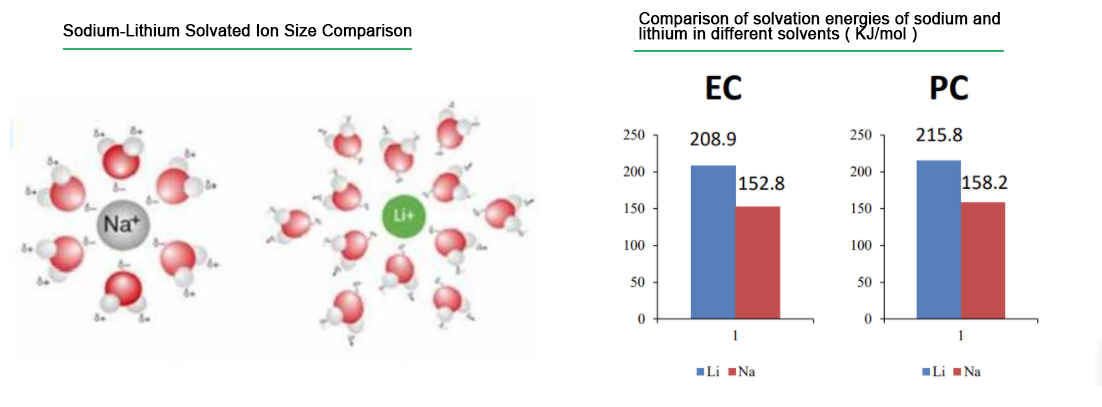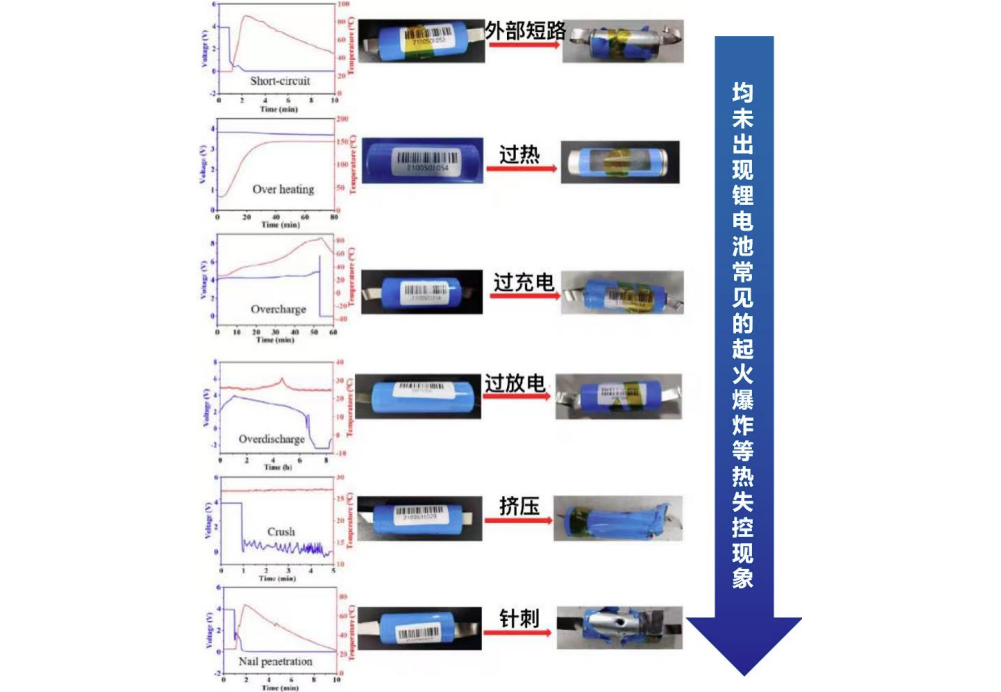소개
빠르게 진화하는 에너지 저장 분야에서 나트륨 이온 배터리는 기존의 리튬 이온 및 납산 배터리를 대체할 수 있는 유망한 대안으로 각광받고 있습니다. 최신 기술이 발전하고 지속 가능한 솔루션에 대한 수요가 증가함에 따라 나트륨 이온 배터리는 고유한 장점을 제공합니다. 극한의 온도에서 뛰어난 성능, 인상적인 속도 성능, 높은 안전 표준이 특징입니다. 이 글에서는 나트륨 이온 배터리의 흥미로운 응용 분야를 살펴보고, 특정 시나리오에서 납축 배터리를 대체하고 리튬 이온 배터리를 부분적으로 대체하는 동시에 비용 효율적인 솔루션을 제공하는 방법을 살펴봅니다.
카마다 파워 는 중국 나트륨 이온 배터리 제조업체제공 나트륨 이온 배터리 판매 및 12V 100Ah 나트륨 이온 배터리, 12V 200Ah 나트륨 이온 배터리, 지원 맞춤형 나노 배터리 전압(12V, 24V, 48V), 용량(50Ah, 100Ah, 200Ah, 300Ah), 기능, 외관 등을 제공합니다.
1.1 나트륨 이온 배터리의 다양한 장점
리튬인산철(LFP) 및 삼원계 리튬 배터리와 비교했을 때 나트륨 이온 배터리는 강점과 개선이 필요한 부분이 혼합되어 있습니다. 이 배터리가 대량 생산 단계에 접어들면 원자재로 인한 비용 이점, 극한의 온도에서도 뛰어난 용량 유지력, 탁월한 속도 성능으로 빛을 발할 것으로 예상됩니다. 그러나 현재 나트륨 이온 배터리는 에너지 밀도가 낮고 사이클 수명이 짧아 아직 개선이 필요한 분야입니다. 이러한 문제점에도 불구하고 나트륨 이온 배터리는 모든 면에서 납축 배터리를 앞지르고 있으며, 생산 규모가 확대되고 비용이 낮아지면서 납축 배터리를 대체할 준비가 되어 있습니다.
나트륨 이온, 리튬 이온 및 납축 배터리의 성능 비교
| 기능 |
나트륨 이온 배터리 |
LFP 배터리 |
삼원계 리튬 배터리 |
납축 배터리 |
| 에너지 밀도 |
100-150 Wh/kg |
120-200 Wh/kg |
200-350 Wh/kg |
30-50 Wh/kg |
| 주기 수명 |
2000회 이상 주기 |
3000회 이상 주기 |
3000회 이상 주기 |
300-500주기 |
| 평균 작동 전압 |
2.8-3.5V |
3-4.5V |
3-4.5V |
2.0V |
| 고온 성능 |
우수 |
Poor |
Poor |
Poor |
| 저온 성능 |
우수 |
Poor |
공정 |
Poor |
| 빠른 충전 성능 |
우수 |
Good |
Good |
Poor |
| 안전 |
높음 |
높음 |
높음 |
낮음 |
| 과방전 허용 오차 |
0V로 방전 |
Poor |
Poor |
Poor |
| 원자재 비용(탄산리튬의 경우 톤당 200만 위안 기준) |
0.3 CNY/Wh(만기 후) |
0.46 CNY/Wh |
0.53 CNY/Wh |
0.40 CNY/Wh |
1.1.1 극한 온도에서 나트륨 이온 배터리의 뛰어난 용량 유지력
나트륨 이온 배터리는 -40°C에서 80°C 사이에서 효과적으로 작동하는 극한의 온도에 강한 배터리입니다. 고온(55°C 및 80°C)에서 정격 용량의 100% 이상에서 방전되며 -40°C에서도 정격 용량의 70% 이상을 유지합니다. 또한 -20°C에서도 100%에 가까운 효율로 충전을 지원합니다.
저온 성능 측면에서 나트륨 이온 배터리는 LFP와 납축 배터리를 모두 능가합니다. 영하 20°C에서 나트륨 이온 배터리는 약 90%의 용량을 유지하는 반면, LFP 배터리는 70%로, 납축 배터리는 48%로 떨어집니다.
다양한 온도에서 나트륨 이온 배터리(왼쪽) LFP 배터리(가운데) 및 납축 배터리(오른쪽)의 방전 곡선

나트륨 이온은 스토크 직경이 작고 극성 용매에서 용해 에너지가 낮기 때문에 리튬 이온에 비해 전해질 전도도가 높습니다. 스토크 직경은 입자와 같은 속도로 침강하는 유체 내 구의 크기를 측정하는 것으로, 직경이 작을수록 이온의 이동 속도가 빨라집니다. 용해 에너지가 낮다는 것은 나트륨 이온이 전극 표면에서 용매 분자를 더 쉽게 방출하여 이온 확산을 향상시키고 전해질에서 이온 동역학을 가속화할 수 있음을 의미합니다.
다양한 용매에서 나트륨과 리튬의 용해 이온 크기 및 용해 에너지(KJ/mol) 비교

전해질 전도도가 높기 때문에 충전 속도가 매우 빠릅니다. 나트륨 이온 배터리는 리튬 이온 및 납산 배터리보다 빠른 단 12분 만에 최대 90%까지 충전할 수 있습니다.
고속 충전 성능 비교
| 배터리 유형 |
80% 용량까지 충전하는 데 걸리는 시간 |
| 나트륨 이온 배터리 |
15분 |
| 삼원 리튬 |
30분 |
| LFP 배터리 |
45분 |
| 납축 배터리 |
300분 |
리튬 이온 배터리는 기계적 남용(예: 압착, 펑크), 전기적 남용(예: 단락, 과충전, 과방전), 열적 남용(예: 과열) 등 다양한 악용 조건에서 열 폭주가 발생할 수 있습니다. 내부 온도가 임계점에 도달하면 위험한 부반응을 유발하고 과도한 열이 발생하여 열 폭주로 이어질 수 있습니다.
반면 나트륨 이온 배터리는 안전 테스트에서 리튬 이온 배터리와 같은 열 폭주 문제가 나타나지 않았습니다. 리튬 이온 배터리와 관련된 위험 없이 과충전/방전, 외부 단락, 고온 노화, 압착, 천공, 화재 노출과 같은 남용 테스트도 통과했습니다.

2.2 다양한 애플리케이션을 위한 비용 효율적인 솔루션, 시장 잠재력 확대
나트륨 이온 배터리는 다양한 애플리케이션에서 비용 효율성 측면에서 빛을 발합니다. 여러 분야에서 납축 배터리보다 성능이 뛰어나 이륜차 소형 전원 시스템, 자동차 스타트-스톱 시스템, 통신 기지국과 같은 시장에서 매력적인 대체품이 될 수 있습니다. 사이클 성능이 개선되고 대량 생산을 통한 비용 절감으로 나트륨 이온 배터리는 A00급 전기 자동차 및 에너지 저장 시나리오에서 LFP 배터리를 부분적으로 대체할 수도 있습니다.
나트륨 이온 배터리의 응용 분야
- 이륜차 소형 동력 시스템: 나트륨 이온 배터리는 납축 배터리에 비해 수명 주기 비용과 에너지 밀도가 우수합니다.
- 자동차 시동-정지 시스템: 뛰어난 고온 및 저온 성능과 우수한 사이클 수명은 자동차의 시동-정지 요구 사항에 적합합니다.
- 통신 기지국: 높은 안전성과 과방전 내성을 갖춘 나트륨 이온 배터리는 정전 시 전력을 유지하는 데 이상적입니다.
- 에너지 저장: 나트륨 이온 배터리는 높은 안전성, 우수한 온도 성능, 긴 사이클 수명 덕분에 에너지 저장 애플리케이션에 적합합니다.
- A00급 전기 자동차: 비용 효율적이고 안정적인 솔루션을 제공하여 이러한 차량의 에너지 밀도 요구 사항을 충족합니다.
2.2.1 A00급 전기 자동차: 원자재 비용으로 인한 LFP 가격 변동 문제 해결
초소형 전기차라고도 불리는 A00급 전기차는 컴팩트한 크기에 비용 효율성이 뛰어나 교통 혼잡 지역에서의 이동과 주차 공간 찾기에 적합합니다.
이러한 차량의 경우 배터리 비용이 중요한 요소입니다. 대부분의 A00급 차량의 가격은 3만~8만 위안으로, 가격에 민감한 시장을 타깃으로 합니다. 배터리가 차량 가격의 상당 부분을 차지하기 때문에 안정적인 배터리 가격은 판매에 매우 중요합니다.
이러한 초소형 자동차는 일반적으로 주행거리가 250km 미만이며, 최대 400km까지 주행할 수 있는 차량은 극히 일부에 불과합니다. 따라서 높은 에너지 밀도는 큰 문제가 되지 않습니다.
나트륨 이온 배터리는 탄산나트륨을 사용하여 원자재 비용이 안정적이며, LFP 배터리에 비해 풍부하고 가격 변동의 영향을 덜 받습니다. 에너지 밀도가 A00급 차량에 적합하여 비용 효율적인 선택이 될 수 있습니다.
납축 배터리는 주로 이륜차 소형 전원 시스템, 자동차 시동-정지 시스템, 통신 기지국 백업 배터리 등 세 가지 애플리케이션에 사용됩니다.
- 이륜차 소형 동력 시스템: 나트륨 이온 배터리는 납축 배터리에 비해 우수한 성능, 긴 수명, 높은 안전성을 제공합니다.
- 자동차 시동-정지 시스템: 나트륨 이온 배터리의 높은 안전성과 빠른 충전 성능으로 시동-정지 시스템에서 납축 배터리를 대체할 수 있는 이상적인 제품입니다.
- 통신 기지국: 나트륨 이온 배터리는 납축 배터리에 비해 고온 및 저온 내구성, 비용 효율성, 장기 안전성 측면에서 더 나은 성능을 제공합니다.
나트륨 이온 배터리는 모든 면에서 납축 배터리보다 성능이 뛰어납니다. 극한의 온도에서도 효과적으로 작동하는 능력과 높은 에너지 밀도 및 비용 이점으로 인해 나트륨 이온 배터리는 납축 배터리를 대체할 수 있는 적합한 배터리로 자리매김하고 있습니다. 나트륨 이온 배터리는 기술이 성숙하고 비용 효율성이 높아짐에 따라 지배적인 위치를 차지할 것으로 예상됩니다.
결론
혁신적인 에너지 저장 솔루션에 대한 탐구는 계속되고 있습니다, 나트륨 이온 배터리 는 다재다능하고 비용 효율적인 옵션으로 돋보입니다. 광범위한 온도 범위에서 우수한 성능을 발휘하는 데다 인상적인 요금 기능과 향상된 안전 기능이 결합되어 배터리 시장에서 강력한 경쟁자로 자리매김하고 있습니다. A00급 전기자동차에 전력을 공급하거나 소형 전력 시스템의 납축 배터리를 대체하거나 통신 기지국을 지원하는 등 나트륨 이온 배터리는 실용적이고 미래 지향적인 솔루션을 제공합니다. 지속적인 발전과 대량 생산을 통한 잠재적인 비용 절감으로 나트륨 이온 기술은 에너지 저장의 미래를 형성하는 데 중추적인 역할을 할 것입니다.